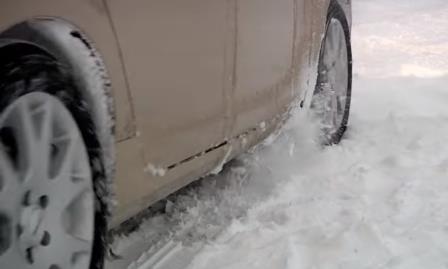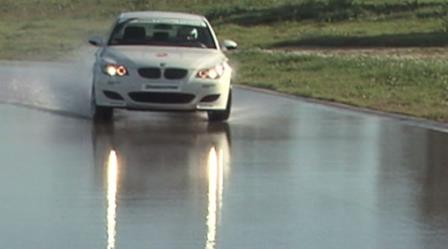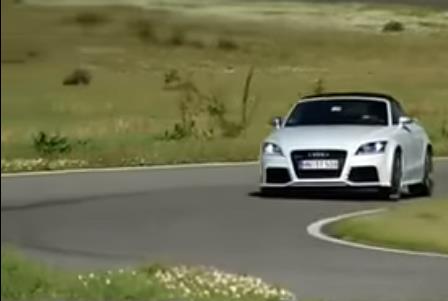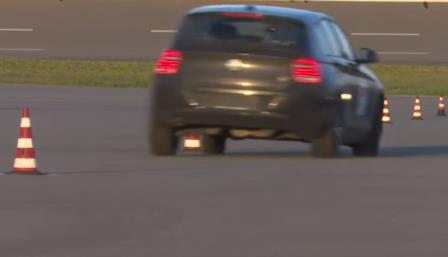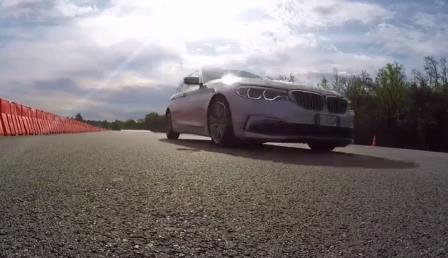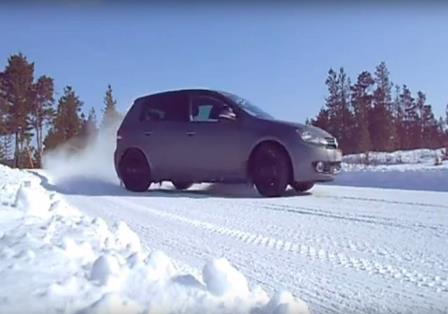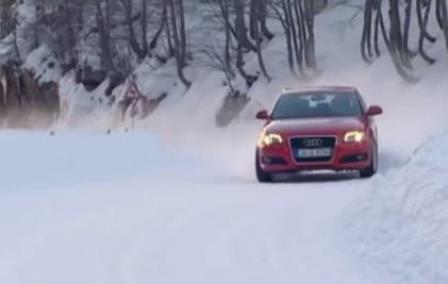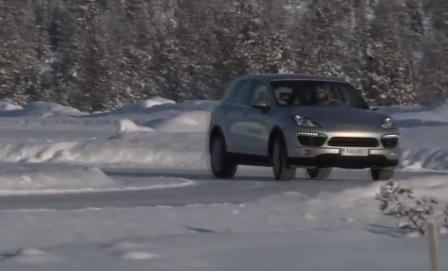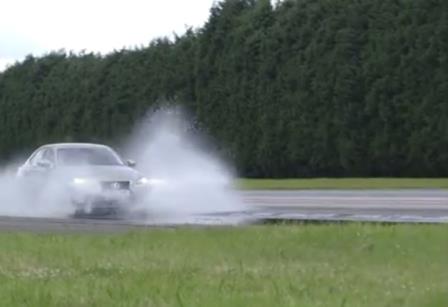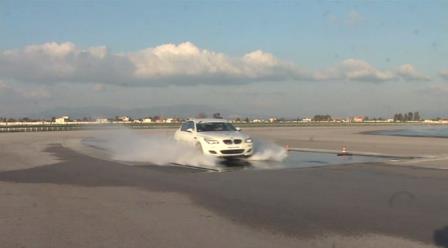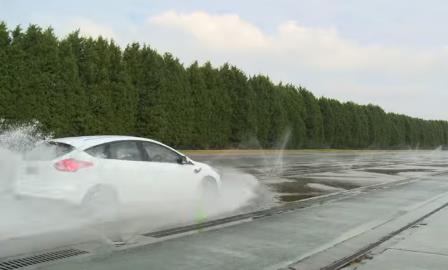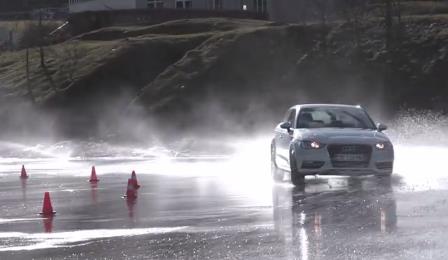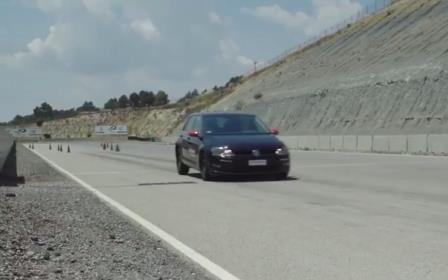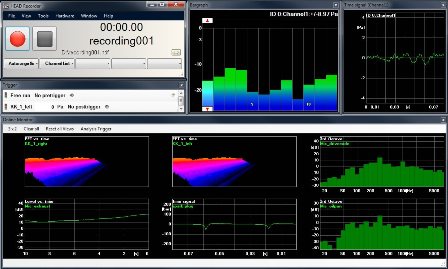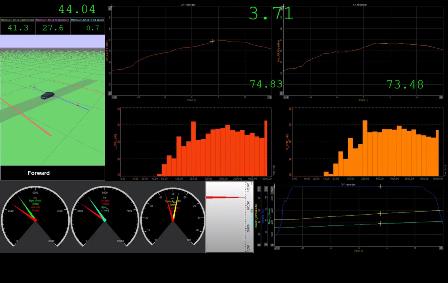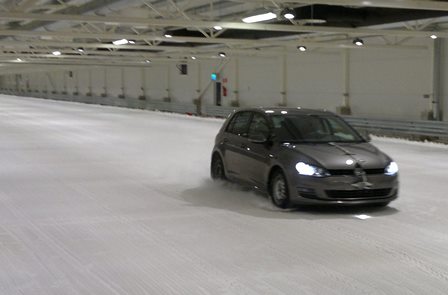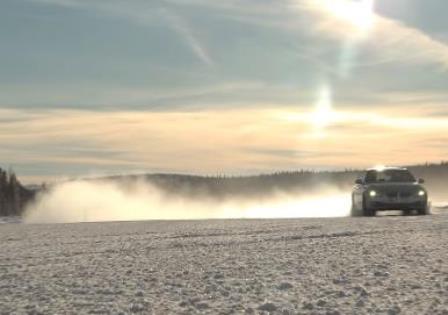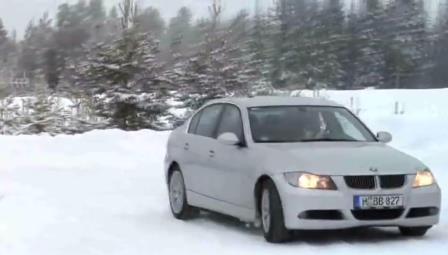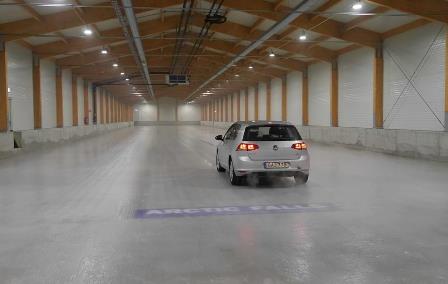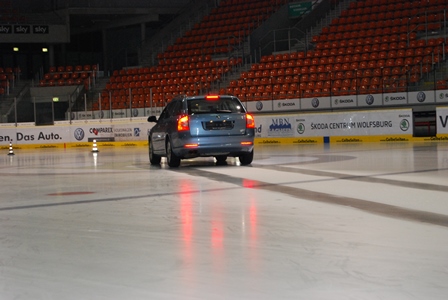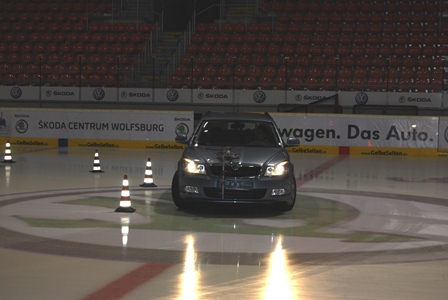The test is performed on different kind of outdoor or indoor snow platforms, making the test vehicle accelerate from standstill to 35 km/h with TCS activated. Speed and time are measured by a GPS-based device or equivalent optical sensor equipped with optional accessories like an accelerator pedal position, accelerometers or wheel speed sensors. The traction time and the acceleration are plot every 2 km/h in order to clearly identify the different design contributions to the traction overall performance. It is also calculated the time and acceleration between 5 and 35 km/h in order to fit with the most common traction metrics excluding the influence of the engine torque transient time and the gear change. A deep data analysis to recognize the TCS logic impact and its matching with the tires characteristic is also possible. Test is usually done on new snow without the necessity of conditioning before starting the test. The test starts with the control tire set to be re-tested at the end of the session in order to keep into consideration possible changes of the test conditions. Up to 7 runs are measured for each tire set and the average acceleration time is considered for the overall result (expressed in %).
